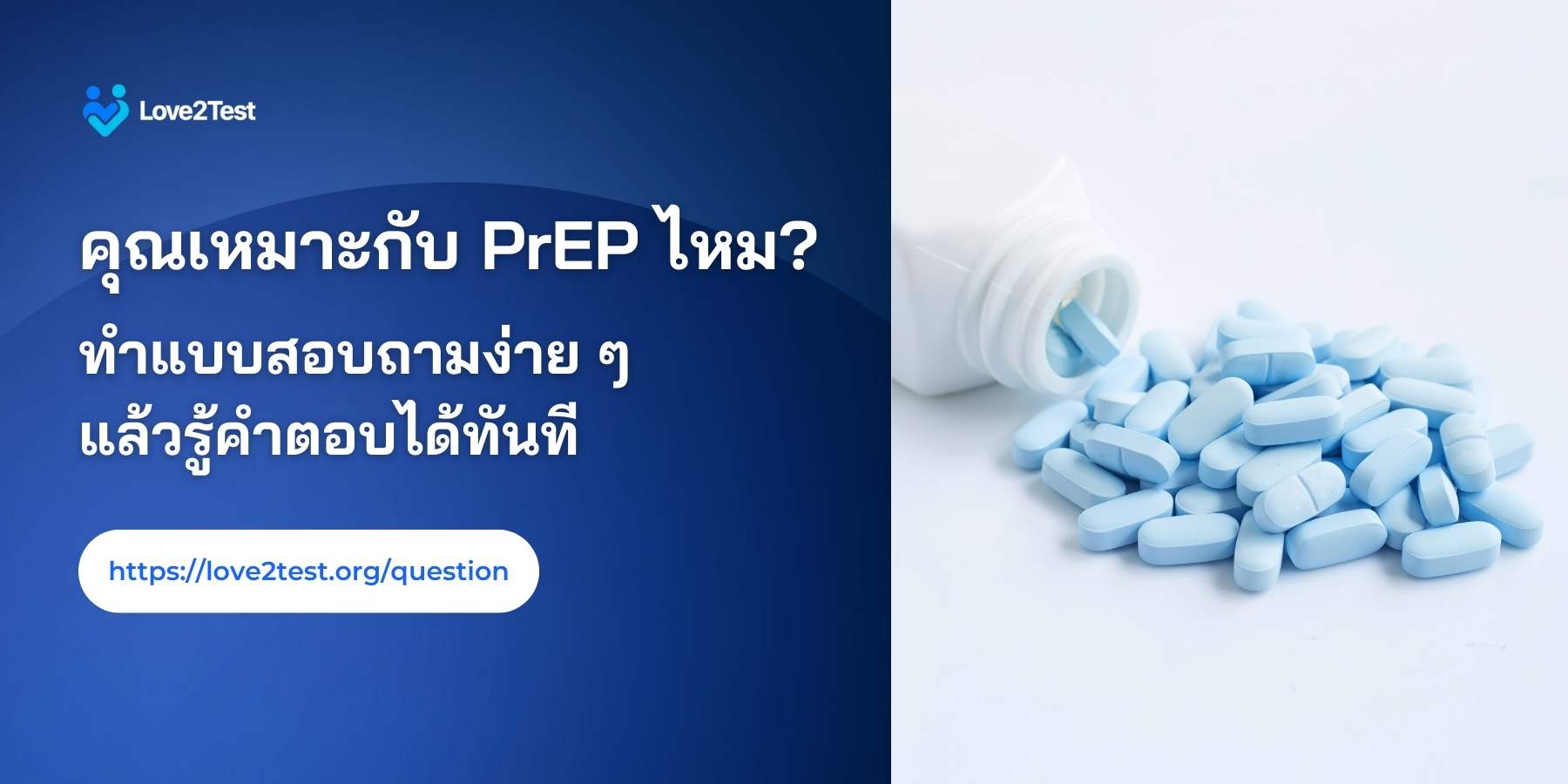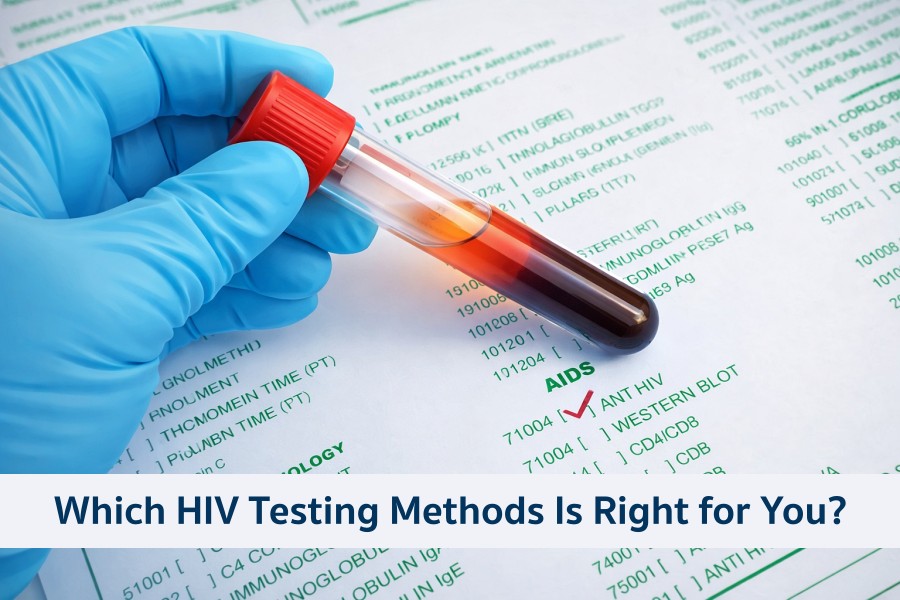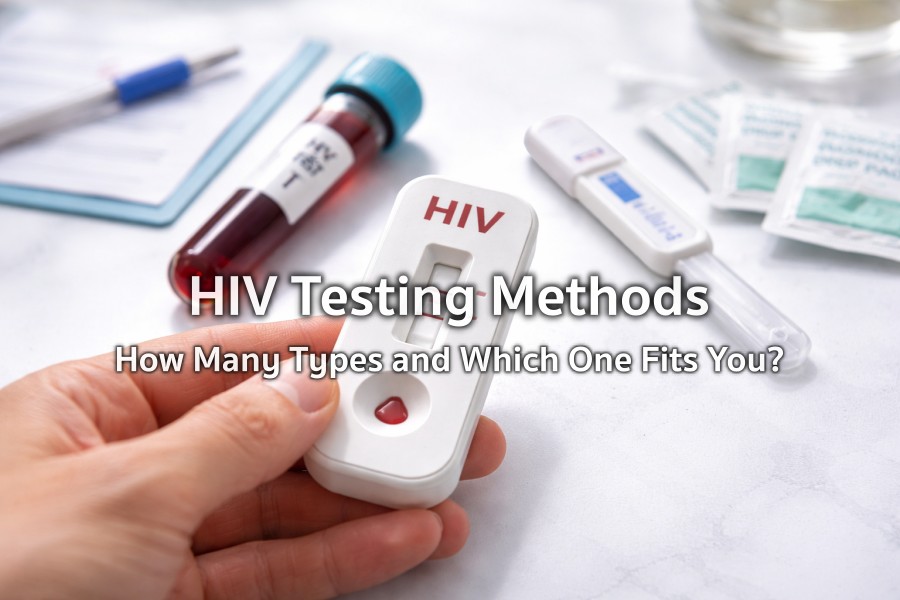HIV Testing Methods are essential tools for understanding your health status and are the first step toward effective prevention and care. Many people are still hesitant or unsure about when to get tested, which method to choose, or how each test differs. Understanding these details correctly can help you make confident decisions, reduce fear, and become more aware of your own health.
There are now several HIV testing methods available to suit different needs and lifestyles — from rapid tests that give results in just 20 minutes, to lab-based tests, and even self-testing kits that can be done at home. This article will take you deep into each method, covering how they work, their pros and cons, how to prepare, and where you can access these services — so you’ll have everything you need to take control of your health with confidence.
Why Everyone Should Understand HIV Testing Methods
Knowledge about HIV testing methods is not only important for high-risk groups, but for everyone who is sexually active or may engage in behaviors that unknowingly increase the risk of infection — such as having a new partner, sharing needles, or receiving unscreened blood or organ transplants. Understanding the available testing methods empowers individuals to make informed decisions, reduce anxiety, and effectively protect their own health.

At the same time, understanding HIV testing also helps reduce stigma in society. Many people still associate HIV testing with fear or with so-called “immoral” behavior. In reality, getting tested is a sign of responsibility and holistic self-care. If everyone knew that HIV testing is easy, safe, and—if detected early—has no major impact on daily life, societal attitudes would gradually shift in a positive direction.
Moreover, when people have accurate knowledge of HIV testing methods, they are better equipped to support or advise friends and loved ones who may be hesitant, without judgment or shame. Access to the right information is a powerful tool for driving positive change—both at the individual and community level.

How Many HIV Testing Methods Are There? A Comprehensive Guide to All Available Options
There are several HIV testing methods available today, each differing in the technology used, the speed of results, the time window in which infection can be detected, and the level of accuracy. Choosing the right method helps ensure reliable results and gives you confidence in managing your health.
Rapid Test (Results in 20 Minutes)
The Rapid Test, or “quick-result HIV test,” is one of the most accessible and popular methods, especially among the general public and in private clinics. It typically provides results within just 15–20 minutes, using a small blood sample from a fingertip or, in some cases, oral fluid. The sample is dropped onto a test strip, which shows colored lines to indicate a positive or negative result.

- Advantages
- No long waiting time for results
- Can be done in small clinics or mobile testing units
- Does not require complex laboratory equipment
- Ideal for preliminary testing in urgent or outreach situations
- Limitations
- Accuracy may be reduced if performed during the “window period” — the early stage after infection when the virus or antibodies may not yet be detectable
- May yield false-negative results if taken too soon after exposure
- A positive result must be confirmed by a standard laboratory-based test for diagnosis
Anti-HIV Testing (ELISA)
The Anti-HIV test, also known as the ELISA (Enzyme-Linked Immunosorbent Assay), is one of the earliest and most widely used HIV testing methods in hospitals and laboratories. It works by detecting antibodies that the body produces in response to HIV infection. This method requires a blood sample drawn from a vein, which is then sent to a specialized laboratory for analysis.
When is it most appropriate?
- Best performed at least 3 weeks to 3 months after a potential exposure
- This window allows the body enough time to produce detectable levels of antibodies
Key Advantages
- High accuracy when performed after the window period
- Can be conducted alongside tests for other sexually transmitted infections (STIs)
Important Considerations
- Results may take 2 to 5 days to process
- If the test is done during the very early stages of infection, it may not detect the virus yet
NAT (Nucleic Acid Test)
NAT, or Nucleic Acid Test, is an advanced technology that detects the RNA of the HIV virus directly. It is currently the most accurate and earliest method available for identifying HIV infection after exposure.
Who is it for?
- Individuals who have had a recent exposure (within 7–14 days)
- Cases where results from Rapid Tests or Anti-HIV tests are unclear or inconclusive
- Blood donors, as NAT helps minimize the risk of undetected infections during the window period
Key Advantages
- Can detect HIV as early as 7–14 days after exposure
- Significantly reduces the chance of false-negative results
Disadvantages
- More expensive than other testing methods
- Usually available only at large hospitals or specialized laboratories
Antigen/Antibody Combination Test (4th Generation)
The 4th Generation Test is a method that combines the detection of both HIV antibodies and the p24 antigen, a core protein of the HIV virus. This dual-detection approach allows the test to identify HIV infection earlier than the traditional ELISA test.
- How soon can it detect HIV?
- It can detect infection as early as 14–20 days after potential exposure
- This test is recommended by the World Health Organization (WHO) as a standard screening method
- Key Strengths
- High accuracy
- Shortens the window period significantly
- Widely used as a screening method in most hospitals
- Things to Note
- Requires a blood draw and laboratory testing
- Results may take 2–3 days to process
HIV Self-Test
HIV Self-Testing is a modern innovation that allows individuals to test themselves for HIV in the privacy of their own home. It offers greater convenience and reduces the embarrassment or anxiety that some may feel when visiting a clinic or hospital.
- How to Use an HIV Self-Test Safely
- Available in two formats: finger-prick blood test and oral fluid test
- Follow the instructions provided in the kit carefully and accurately
- If the result is positive, a confirmatory test must be performed at a healthcare facility
- Who Is It Suitable For?
- People who value privacy
- Teenagers or those new to sexual activity
- Individuals living in remote areas or those who have limited access to clinics
- Important Notes
- Self-testing is not a substitute for diagnosis by a medical professional
- Results from self-tests are for screening purposes only and must be confirmed by a certified HIV test

Which HIV Testing Methods Is Right for You?
| Factor to Consider | Recommendation | Suggested Test Method | Notes |
|---|---|---|---|
| Time Since Exposure (Window Period) | If you were exposed recently | NAT, 4th Generation Test | Detects HIV as early as 7–14 days (NAT) or 14–20 days (4th Gen) |
| If it’s been over 3 weeks since exposure | Anti-HIV (ELISA), Rapid Test | More accurate results after the immune response develops | |
| Risk Behaviors | Unprotected sex, multiple partners, needle sharing | Test every 3–6 months | Regular testing ensures continuous safety |
| Worry or Uncertainty | Want a quick check for peace of mind | Rapid Test | Results in 20 minutes; helps reduce anxiety |
| Need highly accurate and confirmed results | 4th Generation Test, NAT | Performed at medical facilities with lab confirmation | |
| Convenience & Privacy | Prefer to test without disclosing identity | HIV Self-Test | Done at home; positive results must be confirmed at a clinic |
Related Articles
In summary, there are now various HIV testing methods available — from rapid tests that provide quick results, to advanced lab-based technologies like 4th Generation and NAT, and even self-testing kits you can use at home. Whether or not you engage in high-risk behavior, knowing your HIV status is the first step in taking full control of your health. Choosing the right test method depends on several factors, including how long it’s been since potential exposure, convenience, privacy, and the level of accuracy you seek. If testing is done too early, a follow-up test may be necessary to confirm the result. Therefore, understanding each HIV testing method will help you make confident, informed decisions.
Ultimately, getting tested for HIV is not something to be ashamed of — it’s a responsible act of self-care and care for others. The sooner you know, the sooner you can get treatment, and the more confidently and safely you can live your life.
Reference:
การตรวจ HIV วิธีป้องกันความเสี่ยงจากโรคเอดส์ที่ทุกคนควรรู้จัก
- https://samitivejchinatown.com/th/article/sexual-health/hiv-check-up
ขั้นตอนการตรวจเลือด HIV แบบละเอียด เตรียมตัวอย่างไรให้พร้อม
- https://www.thonburihospital.com/hiv-blood-test-preparation
การป้องกัน การตรวจ และการรักษาเอชไอวี
- https://freetesting.hiv/about-hiv

